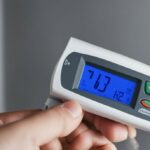Light therapy devices have gained popularity for their ability to treat sleep disorders such as insomnia and circadian rhythm disorders. These devices emit specific wavelengths of light that mimic natural sunlight and regulate the body’s internal clock. With so many options on the market, finding the best light therapy device for sleep disorders can be overwhelming. In this article, we will explore some of the top-rated light therapy devices that can improve sleep quality and reset your circadian rhythm.
Contents
The Importance of Sleep
Sleep is an essential part of our lives, yet many of us struggle to get enough quality sleep. Lack of sleep can have a significant impact on our well-being, leading to fatigue, mood swings, and difficulty concentrating. Sleep disorders such as insomnia, sleep apnea, and restless leg syndrome can make it even harder to get the rest we need. Fortunately, there are several therapies available to help improve the quality and quantity of our sleep, and one of the most effective is light therapy.
Understanding Light Therapy
Light therapy, also known as phototherapy, is a non-invasive treatment that uses specific wavelengths of light to improve mood, sleep, and skin health. The therapy involves exposing the body to bright light for a set amount of time each day, usually in the morning. The light is designed to mimic natural sunlight, which can help regulate the body’s circadian rhythm and improve sleep.
Choosing the Right Light Therapy Device
When it comes to choosing a light therapy device for sleep disorders, there are several factors to consider. Here are some of the most important:
- Brightness: The brightness of the light is measured in lux, and for light therapy to be effective, the device should emit at least 10,000 lux.
- Color Temperature: The color temperature of the light can affect its effectiveness. Blue light is known to be more stimulating and is best used in the morning, while red light is more calming and is best used in the evening.
- Size: The size of the device is important, as it will determine how much of your body is exposed to the light. Larger devices can be more effective but may be less portable.
- Duration: The duration of the therapy session is also important, with most devices recommending between 20-30 minutes per day.
Top Light Therapy Devices for Sleep Disorders
There are many light therapy devices available on the market, but here are some of the best options for improving sleep:
-
Verilux HappyLight Therapy Lamp: This device emits 10,000 lux of bright white light and has a compact design, making it easy to use at home or at work.
-
Philips SmartSleep Wake-up Light: This device features a sunrise simulation that gradually increases in brightness, helping to regulate the body’s circadian rhythm and improve sleep.
-
Circadian Optics Lumine Light Therapy Lamp: This device emits 10,000 lux of bright white light and has a sleek, modern design that will look great in any room.
-
Northern Light Technologies Boxelite Therapy Light: This device emits 10,000 lux of bright white light and has a larger surface area, making it ideal for use in a bedroom or living room.
How to Use a Light Therapy Device
Using a light therapy device is simple, but it’s important to follow the instructions carefully. Here are some general guidelines:
- Place the device at a comfortable distance from your face, usually around 12-18 inches.
- Set the device to the appropriate brightness and color temperature for the time of day.
- Sit or stand in front of the device for the recommended amount of time, usually between 20-30 minutes.
- Use the device at the same time each day, preferably in the morning.
How Light Therapy Can Help with Sleep Disorders
Light therapy can be an effective treatment for various sleep disorders. For instance, it has been shown to be beneficial for people with insomnia, who often struggle to fall asleep, stay asleep, or wake up too early. Light therapy can help regulate the body’s natural sleep-wake cycle, making it easier to fall asleep and stay asleep.
Similarly, light therapy can help people with sleep apnea, a disorder characterized by pauses in breathing during sleep. Sleep apnea can cause a person to wake up repeatedly during the night, leading to daytime fatigue and other health issues. Light therapy can help regulate the body’s sleep-wake cycle, making it easier to fall asleep and stay asleep.
Tips for Maximizing the Benefits of Light Therapy
Here are some additional tips to help you get the most out of light therapy:
- Use the device consistently: For light therapy to be effective, it’s essential to use the device regularly and at the same time each day.
- Combine light therapy with other sleep-promoting practices: Light therapy works best when combined with other healthy sleep habits, such as maintaining a regular sleep schedule, avoiding caffeine and alcohol, and creating a relaxing sleep environment.
- Consult with a healthcare professional: If you have a sleep disorder, it’s essential to consult with a healthcare professional before starting light therapy or any other treatment.
FAQs for Best Light Therapy Device for Sleep Disorders
What is light therapy, and how does it work?
Light therapy, also known as phototherapy, is a non-invasive form of treatment that involves using a specialized light therapy device to simulate sunlight. It involves exposing individuals to artificial light to help regulate their body’s circadian rhythms, which in turn can help improve mood, sleep, and other physiological functions. Light therapy works by stimulating the production of the hormone melatonin, which helps regulate sleep-wake cycles.
What types of sleep disorders can light therapy help with?
Light therapy has been shown to be effective in treating a variety of sleep disorders, including insomnia, delayed sleep phase syndrome (DSPS), and seasonal affective disorder (SAD). It’s also been found to be useful for individuals who work nights and struggle with maintaining a normal sleep schedule.
What factors should I consider when choosing a light therapy device?
When selecting a light therapy device, there are several factors you should consider. Firstly, the intensity of the light is crucial. Ideally, your light therapy device should emit a minimum of 10,000 lux of light in order to be most effective. Secondly, the size and portability of the device are important. You’ll want to consider whether you need a device that is easy to move around with, or if you prefer a stationary option. Additionally, you may want to consider the type of light the device emits – some lights simulate natural daylight, while others may emit a blue or red light. Lastly, it’s important to factor in your budget when choosing a light therapy device.
Are there any potential side effects of light therapy?
While light therapy is generally considered safe, there are some side effects that individuals may experience. The most common side effect is eye strain, which can occur if you stare directly into the light source. However, this can be easily avoided by using a device with a diffuser or by using it at an appropriate distance. In rare cases, light therapy can also trigger manic episodes in individuals with bipolar disorder – if you have this condition, it’s important to speak with a healthcare professional before starting light therapy.
How long should I use the light therapy device for?
The length of time you should use a light therapy device each day can vary, depending on the specific device you’re using and the severity of your sleep disorder. However, most devices recommend using them for 30 minutes to two hours each day, typically in the morning or midday. It’s important to follow the instructions that come with your device and to speak with a healthcare provider if you have any questions or concerns.



.jpg)



